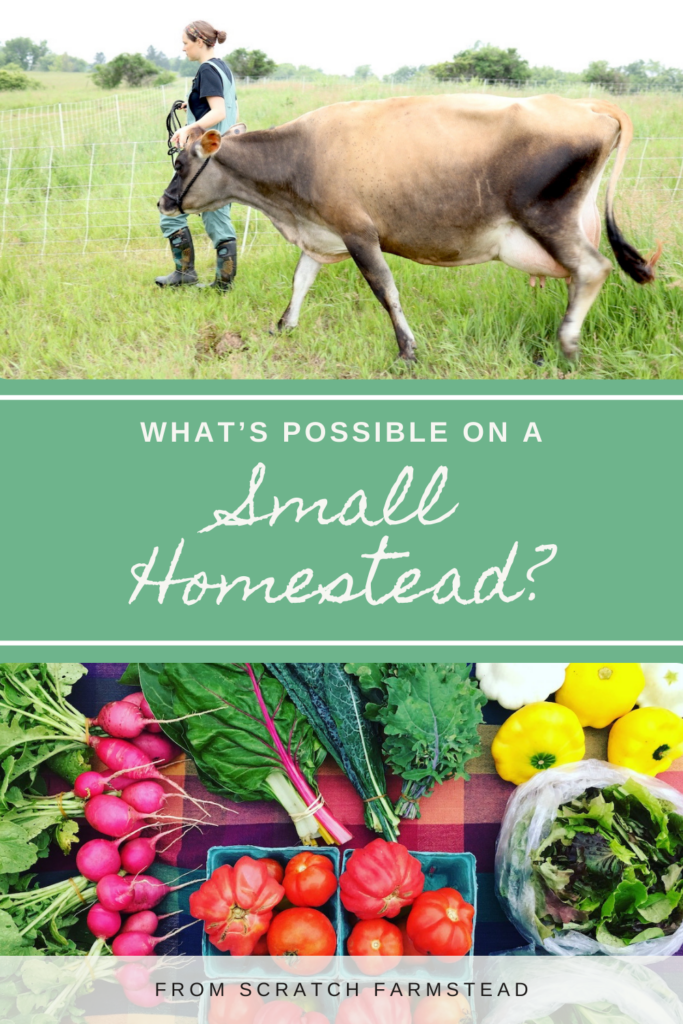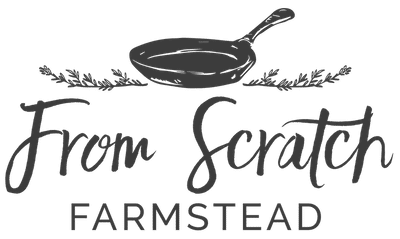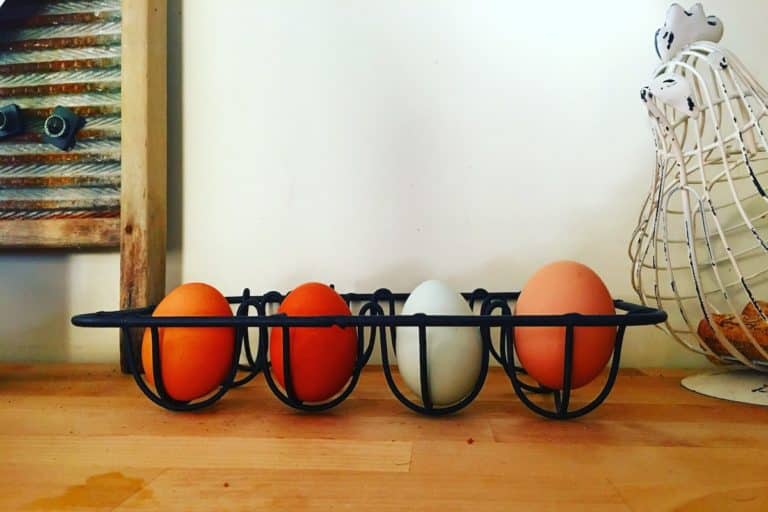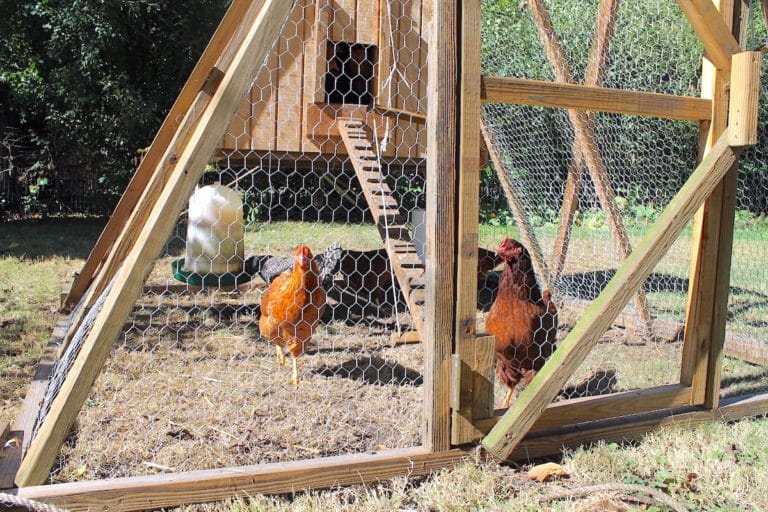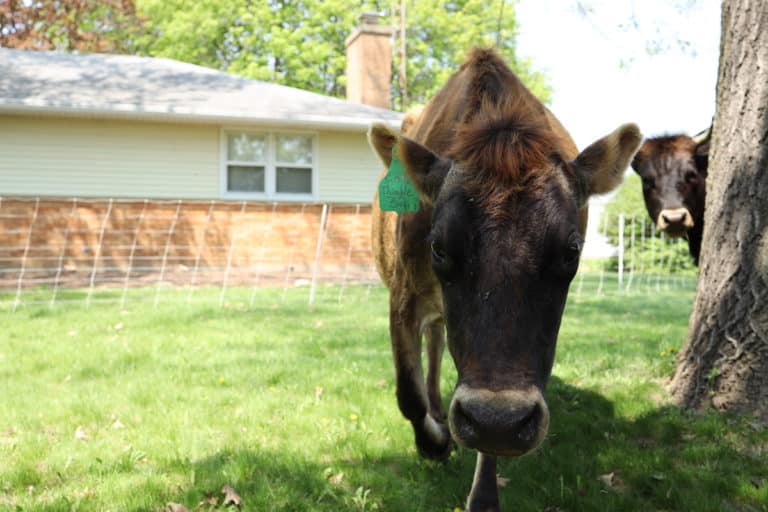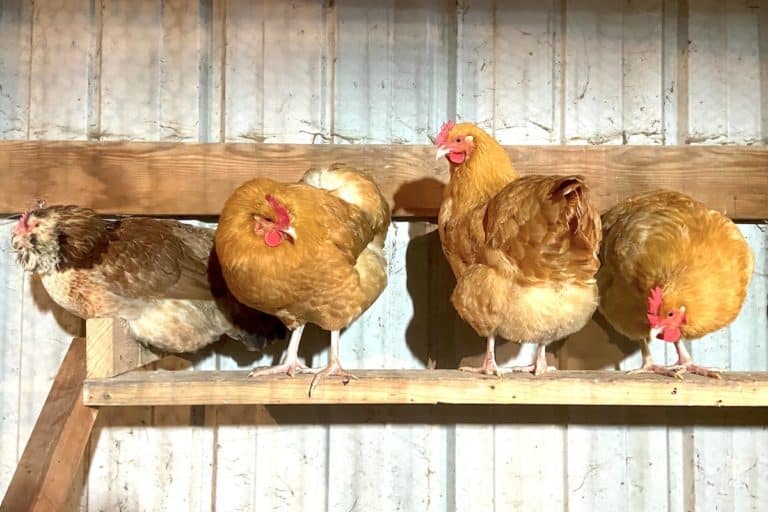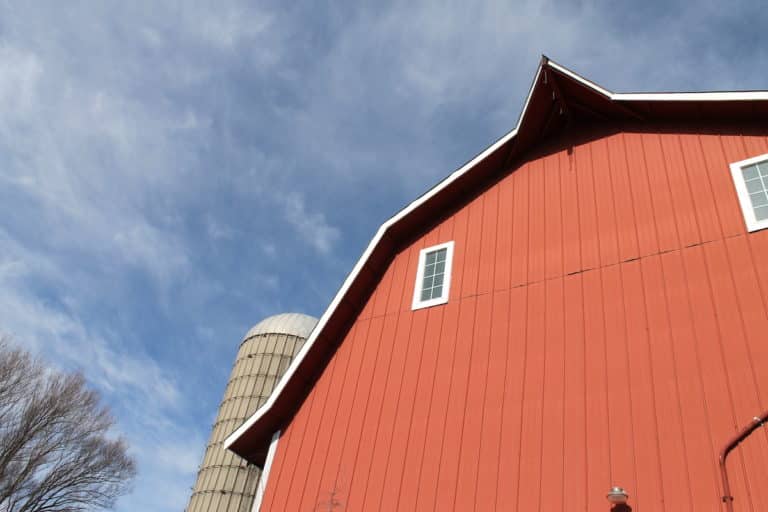What’s Possible on a Small Homestead?
You don’t need huge acreage to homestead on. But what’s possible on a small scale? Let’s look at examples of what you can grow on a small homestead and ways you can make income.
The Case for the Small Homestead
Homesteading has moved from the fringe to the mainstream. As so, many didn’t grow up homesteading.
The result is a large crop of many first-generation, or “skipped” generation, homesteaders. This group is likely starting entirely from scratch—building a homestead, learning skills, creating the lifestyle—without much or any homesteading background.
We are in this camp!
As former suburbanites turned homesteaders, we are still constantly learning. This video shares more of how we got to where we are and gives an overview of our 5 acre homestead:
At first I was disappointed we ended up with just 5 acres. But, as a newbie to the homesteading world, I realized a humbling truth early on—I can’t handle more land!
Not now. Not in a season of trial and error. And certainly not when getting anything off the ground requires all the physical, mental, and emotional energy I have.
Maybe some day we could graduate to more land. But for now, 5 acres has been plenty to keep up with… and produce with!
More on that soon.
What is a Small Homestead?
The historical tracts of homestead land handed out by the U.S. government were 160 acres.
That’s not what we are talking about here. Nor are we talking about 40, or even 20 acres.
For the purposes of this post we’re going to define a small homestead as around 5 acres (or less).
As we’ve outlined in our post, Why a 5 Acre Homestead is the Perfect Size for a Beginner, 5 acres is somewhat of a dividing point.

Once you jump into that 10-20 acre range, you shift toward needing bigger equipment, larger infrastructure, more help.
Five-ish acres allows you to keep things primarily human-scale, while also still offering a full spectrum of potential homesteading enterprises and activities to consider.
Let’s look deeper into examples of what other homesteaders are doing on a small-scale.
Small Homestead Examples
No single homestead does everything. And that is 100% OK!
We’ve often found we only have the capacity to take on one major new homesteading activity per year. The times we’ve tried to take on more than that is when we’ve learned the hardest lessons.
But what’s even possible on a small homestead?
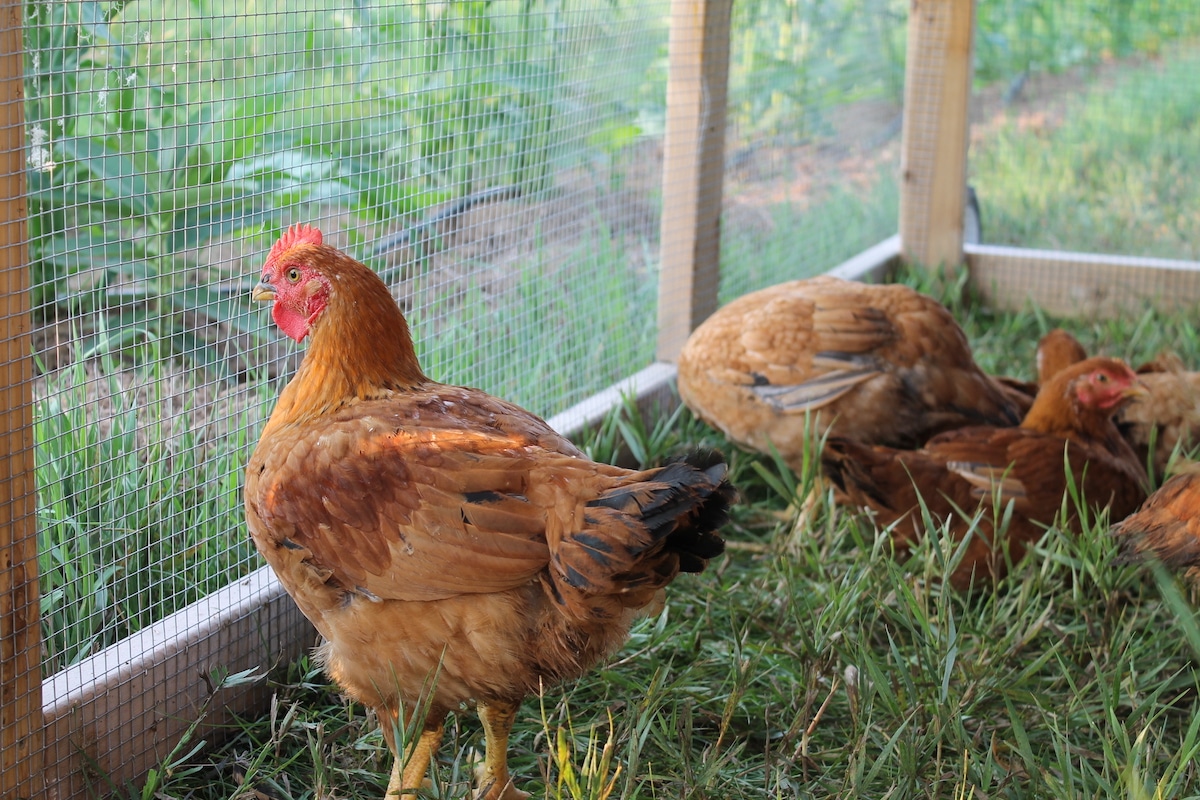
That’s when it’s helpful to look at real-life examples. As inspiration, we’re going to give a snapshot of 5 different homesteads that are doing really amazing things!
Just remember, behind every homestead are every day people. The only thing extraordinary about them is that they’ve gone for it and forged their own homesteading path.
Small steps can build to great things over time—wherever you are at now!
1. Blue Whistler Farm
Amy at @bluewhistlerfarm made a recent transition. Formerly farming on 5 acres, her and her family raised pastured poultry, rabbits, ducks, and more in North Carolina. After moving to just under 5 acres in Missouri, her family has now shifted toward homesteading and growing their own food. Her focus is primarily on sheep for dairy, meat, and fiber and calls them the, “best bang for our buck!” In fact, she makes a pretty strong case for keeping a few milking ewes over a family milk cow on a small scale. They also keep ducks and rabbits as well as practice their own butchering on farm. Amy is also a visionary and founded the collaboration Homestead Mamas—a fantastic resource for more homesteading encouragement and inspiration.
2. The Narrow Gate Homestead
Josh and Jordan of @thenarrowgatehomestead are first generation homesteaders in Central Florida. In addition to gardening on their (less than) 2 acres they raise rex rabbits, chickens, Nigerian Dwarf goats, and Kunekune pigs. They’ve recently taken up milking one of their NDG does who had her first kid. Jordan encourages other homesteaders to, “Start where you are.” A turning point for her and her family was when they shifted from the mindset of dreaming of more land “someday” to realizing, “there was so much we could do in the waiting.”
3. Nest In The West Homestead
Sarah, of @nest.in.the.west, homesteads on 2 acres in Arizona. Through their Mini Nubian dairy goats, Kunekune pigs, ducks, chickens, and the occasional steer, they produce all their own meat and dairy. In addition to growing much of their own produce, they also planted an orchard with 25 fruit trees. Their story also includes building their own home entirely from the ground up. Sarah loves cooking and baking from scratch, sewing, crocheting, knitting, and all things dairy! In fact her passion for cheesemaking in particular pushed her to recently launch an online goat milk cheese course!
4. The Nickols Family Homestead
Natalie from @nickolsfamilyhomstead and her husband Tyler are first generation homesteaders on 5 acres in Northern Indiana. They have two milk cows, 6 pigs (3 for breeding & 3 feeders), a large garden, farm dog, and many chickens. When it came to farm infrastructure, they had nothing besides their home when they started out on their 5 acres. So, they got scrappy, frugal, and worked with whatever materials and resources they could find to build shelters, pens, and anything else their homestead needed. Natalie also works as a childbirth doula and birth assistant for a home birth midwifery practice.
5. From Scratch Farmstead
Yes, we included yours truly. Not because we see ourselves as exceptional. But because we too are first generation homesteaders who have employed a lot of resourcefulness, learning, and grit to get to where we are today. We focus on simple homesteading on a budget. Our homestead currently includes our family milk cow, laying hens, meat chickens, Maremma LGD, orchard with 30+ fruit trees, perennials like asparagus, rhubarb, and berries, vegetable garden, and what we call our 1/4 acre self-sufficient homestead garden. This 1/4 acre space takes a permaculture approach that encompasses growing the three sisters (corn, beans, & squash), potatoes, our fruit trees, and is where we raise our meat chickens in chicken tractors on grassed alleyways. We also place an emphasis on preserving foods while in season to have all year. We produce somewhere around 80% of the food our family lives off of year round right from our homestead.
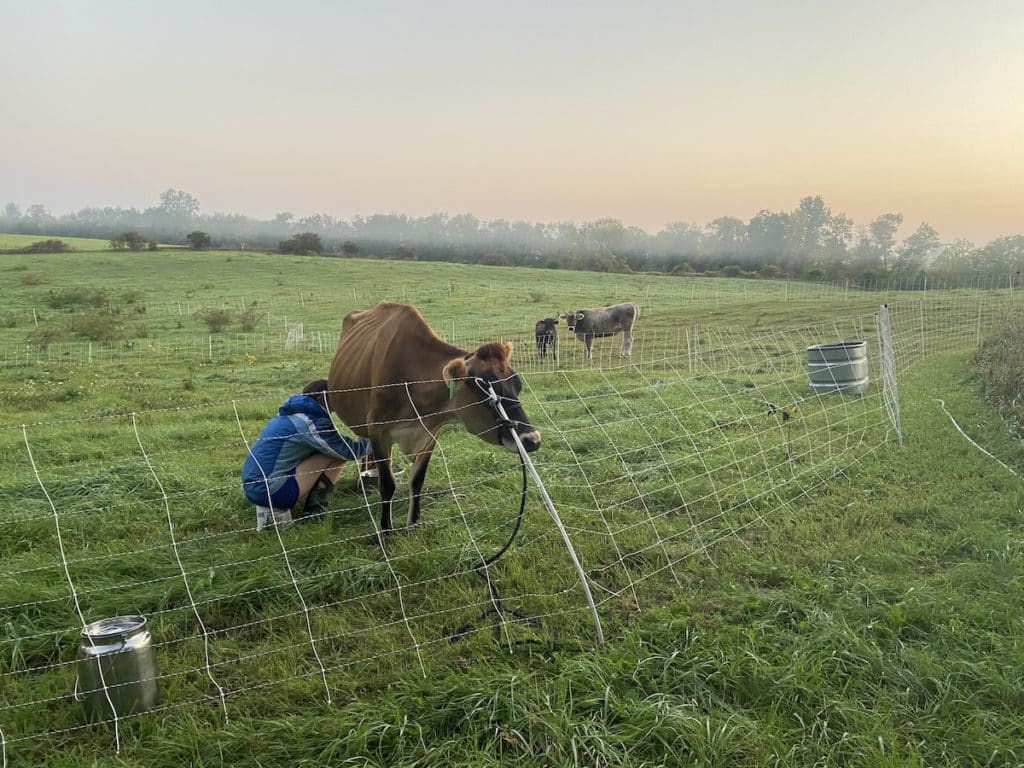
Turning your Small Homestead into a Business
Homesteading and entrepreneurship are almost synonymous. Offering your skills, services, and products is deeply embedded in the fabric of homesteading, both historically and today.
In fact, one of the most common questions or ambitions we hear is, “How do I make a side income homesteading?” Or, “How can our homestead pay for itself?”
Building that side homesteading business can take time. Be patient with it. Expect trial, error, pivoting your approach, more trial and error, and eventually finding what sticks.
Here are two tips:
1) Find your passions! Maybe you’re passionate about a particular breed of animal that you can breed and sell. Maybe a value added product has been life changing for your family and that story can help propel you to market that product to others. The point is, don’t force it. If you’re not passionate about gardening, then don’t feel like the cliche market garden is your only option. Know what gets you out of bed in the morning and figure out ways to make a business out of it.
2) Engage with your community. Let your community speak to you on what needs are out there. Maybe you notice a big void at your local farmers market of a particular farm product you can grow. Maybe you search for something online and don’t find the exact product, ingredients, fabrics, or whatever that you’re looking for. There is opportunity there! You can fill that niche. If you’re searching for it, chances are that others are too!
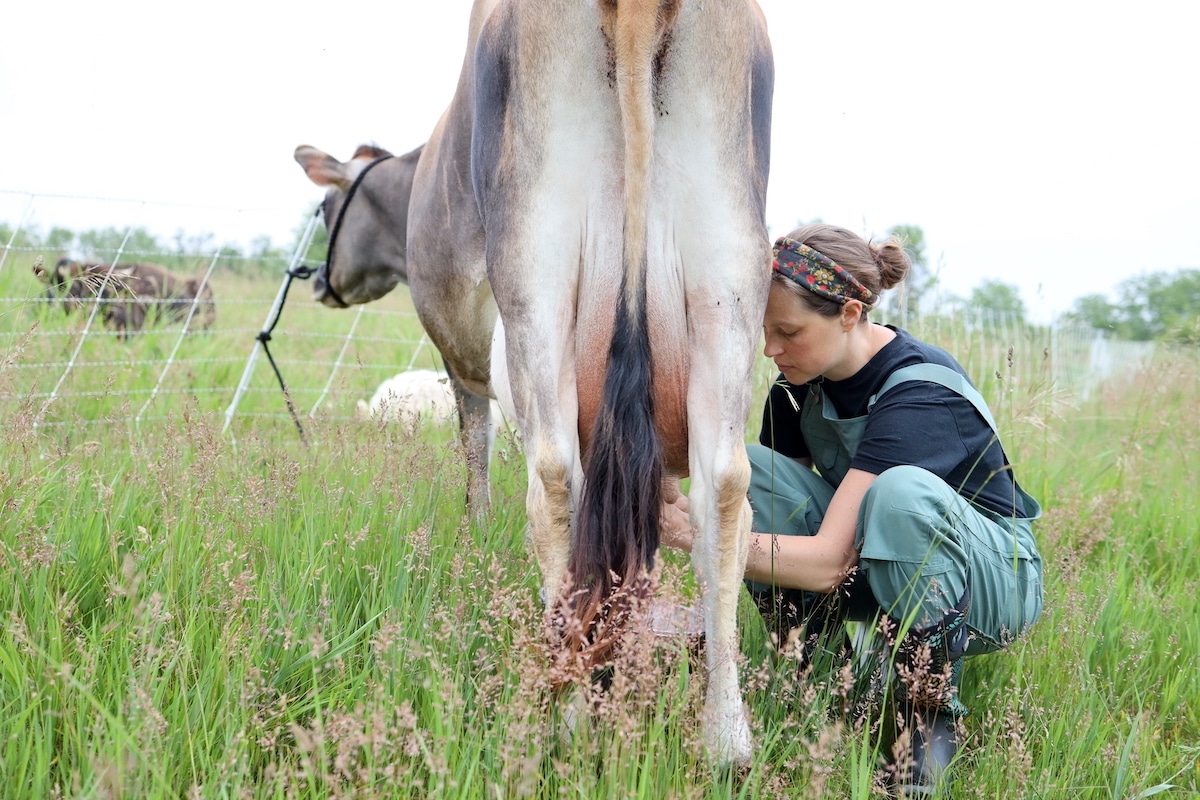
How to Launch Your Homestead Business
Conventional wisdom follows the “Ready, Aim, Fire” approach.
This means doing all the market research, writing up the full business plan, having the website, logos, labels, and packaging all dialed in. And then… getting started. FIRE!!
The problem with this approach—most people never make it to the fire stage and, therefore, never get started.
When it comes to launching a small business, we tend to resonate more with the opposite approach—Fire, Aim, Ready!
In this approach, you just start. Somewhere. Anywhere. Let your creativity and positivity drive you. Put yourself out there. Try without being afraid of failure.
There are SO many homesteading enterprises you can try with little or no upfront investment. What that means is that the risk is negligible. But the potential for reward is great!
Our Example of Trying Out a Business
It may be that the Fire, Aim, Ready approach comes in the form of learning what doesn’t work. And that is helpful too!
Our first go at this was a weekly farm stand when we lived in the suburbs on 1/3 acre. We harvested, washed, and packed all our items, then sent out a weekly email with the produce we had, and sat out at our little table in front of our house every Tuesday evening.
This little business venture taught us SO many skills.
Email marketing, product packaging and presentation, how to price things and make a sale, the logistics of harvesting, cleaning, and storing fresh produce.
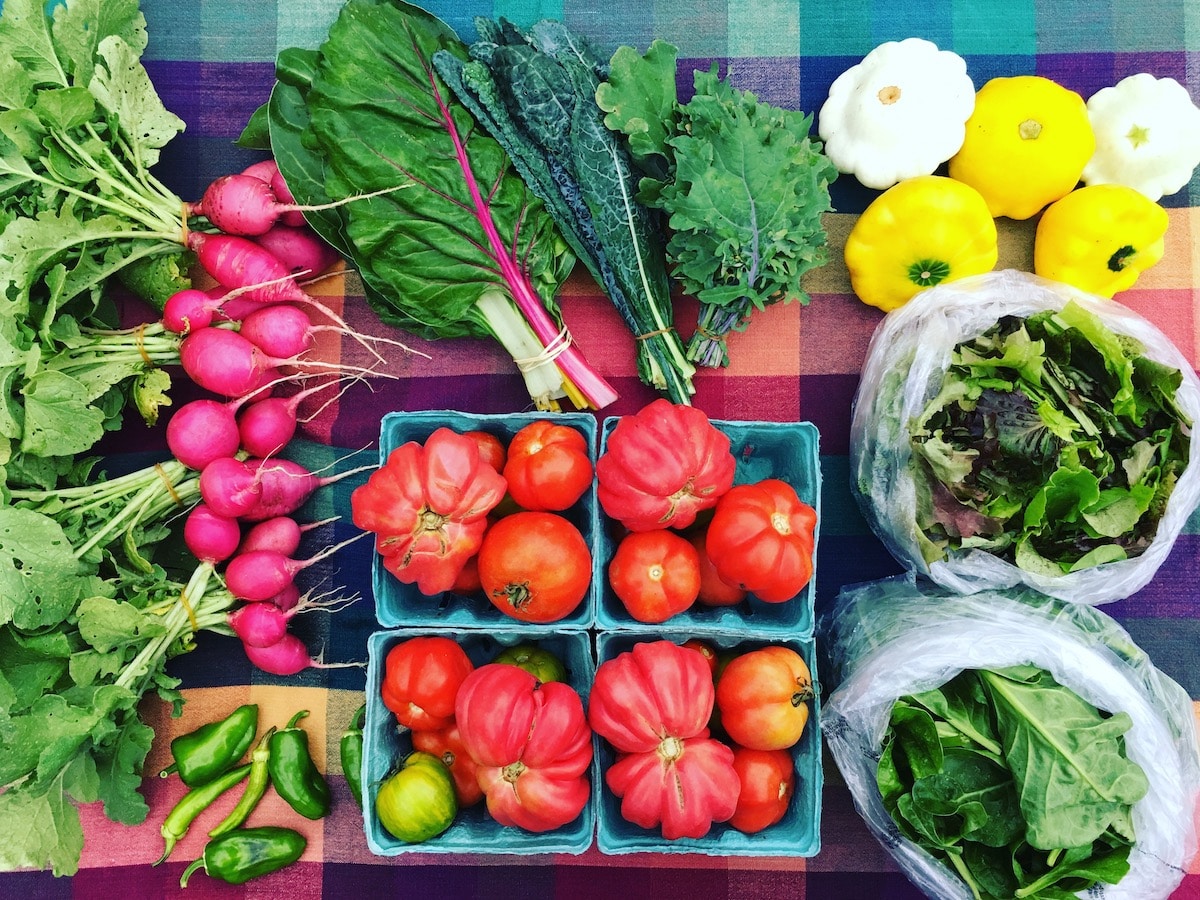
And maybe most importantly, it taught us that we didn’t want to be market gardeners in the end after all. It was fun—but it wasn’t our passion.
The point here is, had we planned the whole thing out to a T and waited until we felt more “professional” in our approach, our effort probably would have fizzled before it ever took flight. Or, we would have felt so much pressure to make it a success that we would have struggled just enjoy the process and lessons learned along the way.
Small-scale homestead businesses are often best received and most successful when they happen organically. The less buildup and expectations attached the less chance of risk and disappointment.
There is a time and a place for the full fledged business plan, branding, and marketing. But most small homestead ventures are best suited for figuring out the simplest way to get it off the ground, adapting, and seeing where it takes you!
Ways to Make Income on a Small Homestead
Small business is growing—especially among homesteading communities. Opportunities with physical products or services are always needed. Or, an ever increasing amount of online opportunities exist that can give a broader reach.
This list is not exhaustive. But it’s designed to give you tracks to run on as you consider ways to generate income on your small homestead.
1. Start a Blog
Blogging has evolved. No longer is blogging about just capturing your stories and thoughts and hoping it gains an audience over time. Bloggers today focus on keywords, or answering the questions people look up on search engines. An entire industry of ways to monetize blogs has grown up around this. Our family just recently started meeting our monthly income needs through our online business and our blog is the foundation of that. It’s impossible to cover all that blogging encompasses in detail here. But a blog can create opportunities for advertisements, affiliates, brand sponsorships and collaborations, as well as be a platform to promote and sell your products or services. For more, check out the Create Your Blog Dream Course that Lisa at Farmhouse on Boone put together. We found this course to be invaluable in giving us simple, step-by-step guidance and encouragement to go after our blog.
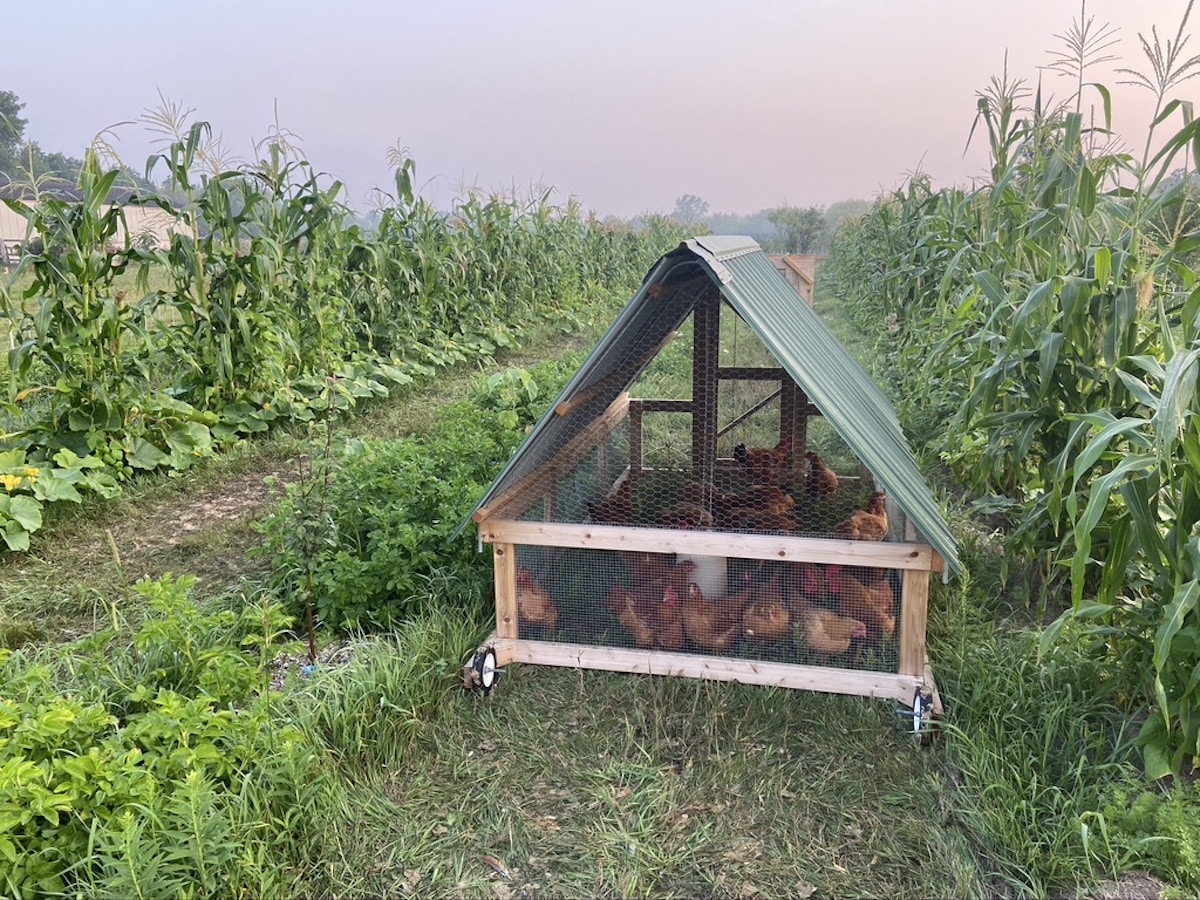
2. Etsy Shop
Etsy (or other online sales streams) can open up a world of possibility to sell products produced on your homestead. It’s possible to market your products through social media, your own website, or other local streams. But Etsy funnels hoards of customers motivated to buy from small producers to one single place. A great example is our friend Anna at Big Woods Botanicals who has started offering her herbal healing products and been able to reach a much larger audience through her Etsy shop.
3. YouTube
Like every platform, YouTube has gravitated toward advertisements in recent years. Every time you watch an ad before, during, or after a video you’ve clicked on, the creator behind that video gets paid a small amount. And if you get enough views on your videos, those small amounts can add up. Many with a specific enough niche or unique enough skillset have found success offering their how-to’s, expertise, or vlog style content through their very own channel. We started our YT channel at the beginning of 2022 and have been pleasantly surprised with the steady income it brings in. Plus, it can eventually lead to other collaboration and sponsorship opportunities beyond just ad revenue. Lisa at Farmhouse on Boone also has a YouTube Success Academy course that we found super helpful for getting started.
4. Value Added Products
Many products can be transformed into something of greater value, and therefore offer greater profit margins. For instance, a local vegetable farm selling at the farmers market in our area started raising pigs and selling pork. The pigs produced an abundance of lard, which doesn’t fetch much money on its own. Then they discovered lard makes fantastic (and sought after) soap bars! Not only were they able to turn something of little value into something profitable, but it also gave them a product to sell during the early growing season when their selection of produce is limited.
5. Farmers Markets
Farmers Markets offer fantastic local sales funnels for the small-scale producer or homesteader. Maybe your land can support growing an abundance of just one or a few items. Maybe you have others artistic or creative skills like sewing that can allow you to produce unique and useful items. You may have to do some research on the local markets in your area and see where your offerings may be best received. But if you have a physical product, farmers markets are a great starting point.

6. CSA Share
A CSA (Community Supported Agriculture) can be a way for even small homesteads to sell what they grow and develop a community of invested individuals. In the CSA model, an upfront fee is paid to a grower in exchange for a regular share of what they produce. Most common are vegetable CSA’s provide weekly vegetable boxes throughout the growing season. But there are so many other options out there—meat, herbs, flowers, poultry, value added products, fruit, etc. The benefit is you get paid upfront. The downside is, you need to deliver on what you promise! Anything you can produce in abundance on your homestead can fit the CSA model.
7. AirBnB
I’m not assuming here that you just have a spare home sitting on your property. But if you did, farm stays are hugely popular right now! Maybe there’s a spare room or space in your home that can be rented out. What about setting up an RV or tiny home on your property? Or, even a yurt! A local farm by us has a couple yurts they rent out on AirBnB. They see incredible income from this as urban dwellers look for a unique, rural escape.
8. On-Farm Classes
As a homesteader you are honing unique skills. Sourdough, making butter, crocheting, wreath making, gardening, raising backyard chickens. The possibilities are endless. Whatever you specialize in and enjoy showing others how to do, find ways to monetize it and offer it as an in-person class on your farm! I took an on-farm pig butchering class at another small farm in our area. It’s a great way for homesteaders to trade and share skills.

9. Online Courses
If you’d like to take your skillsets or expertise to wider audience, then consider setting up your course online. What hobby have you mastered? Winemaking? Homemade clothing? Specific growing techniques in the garden? Growing on social media? If others have taken note of something you do and asked how you do it, that could be a sign you’re onto a unique and valuable online course offering. There are so many platforms, like Teachable and Kajabi, that can help get you started.
10. Kids Camp
Summer camp opportunities for kids on your homestead can be a goldmine! Learning skills, being outside, having fun with animals, developing a strong work ethic—all things every parent wants to expose their children to over summer break. A local farm by us, Alden Hills Farm, offers summer kids camps, which both utilizes their strengths and has been hugely popular for families in the area.
11. Animal Breeding
You’ve grown infatuated with a particular breed of pig. Or you have a dog breed that has been the perfect addition to you homestead and you want to share it with the world! Breeding animals and developing specific traits and pedigrees can be a great way to make irregular, but significant income.
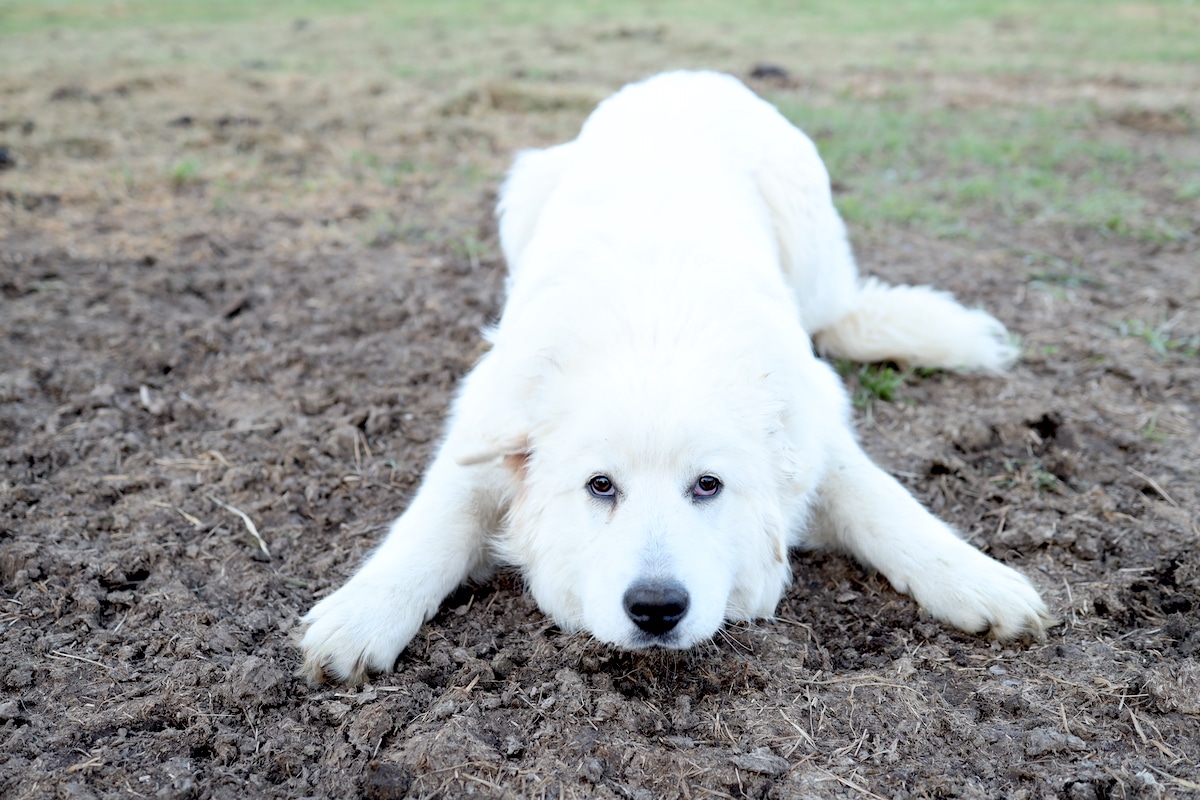
12. Plants/Seedlings
If you have the equipment, space, and infrastructure to produce your own plants or seedlings in the spring, that can be a huge money maker. Vegetables, flowers, herbs, berries, ornamentals, perennials—these seasonal plant sales can bring in good income. And likely not require that much more work than you’ll already be putting in to get your own garden started.
13. Consultations
Maybe your homesteading journey has taken you down the path of getting a specific credential or certification in the health and wellness space. Maybe you’ve become an expert beekeeper and can offer paid mentorship to others throughout the season. Or maybe you’ve studied permaculture and can help others design their homestead layout. Chances are you have enough expertise in some area that others are willing to pay you for your time.
14. Egg Sales
Eggs from chickens, ducks, quail, and more can be great ways for the small scale homesteader to bring in some income and help offset costs. We try and produce about twice as many eggs as what our family consumes. This way, in selling a few dozen extra eggs every week, we’re able cover the cost of feed and other chicken supplies so that our flock pays for itself!
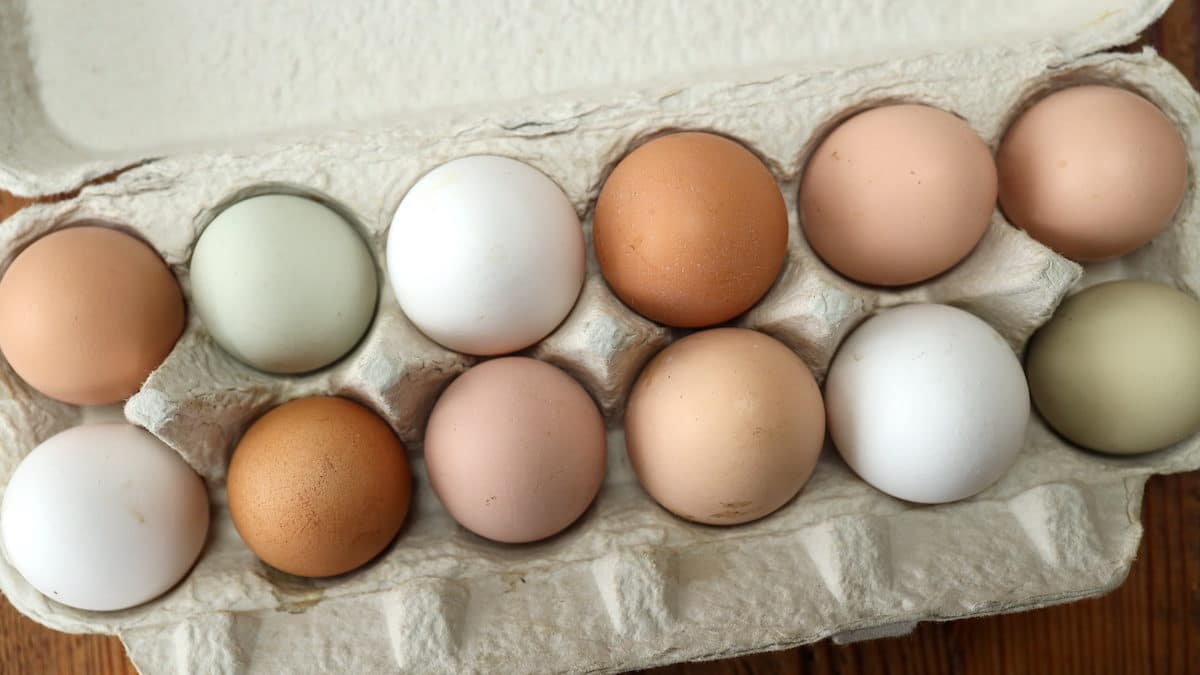
15. Cottage Kitchen
The food industry can be tricky on a small scale. Many prepared food items require a commercial kitchen in order to sell them. But the cottage kitchen industry is expanding! Each state has cottage laws in place allowing particular food items to be produced and sold in a home kitchen. We have some friends who recently started selling sourdough bread at a farmers market that is baked right in their home.
16. Meat or Poultry Sales
Five or less acres likely won’t support a beef business. But pork, lamb, goat, poultry, or others could definitely be on the table. Smaller animals can also allow for the option of home processing. Just be sure to look into State and USDA regulations before selling meat products. Poultry can sometimes be a better fit for the small homestead, where many states allow for poultry to be legally be processed and sold on farm. Our home state of Illinois allows for up to 1,000 birds to be processed on-farm and sold every year.
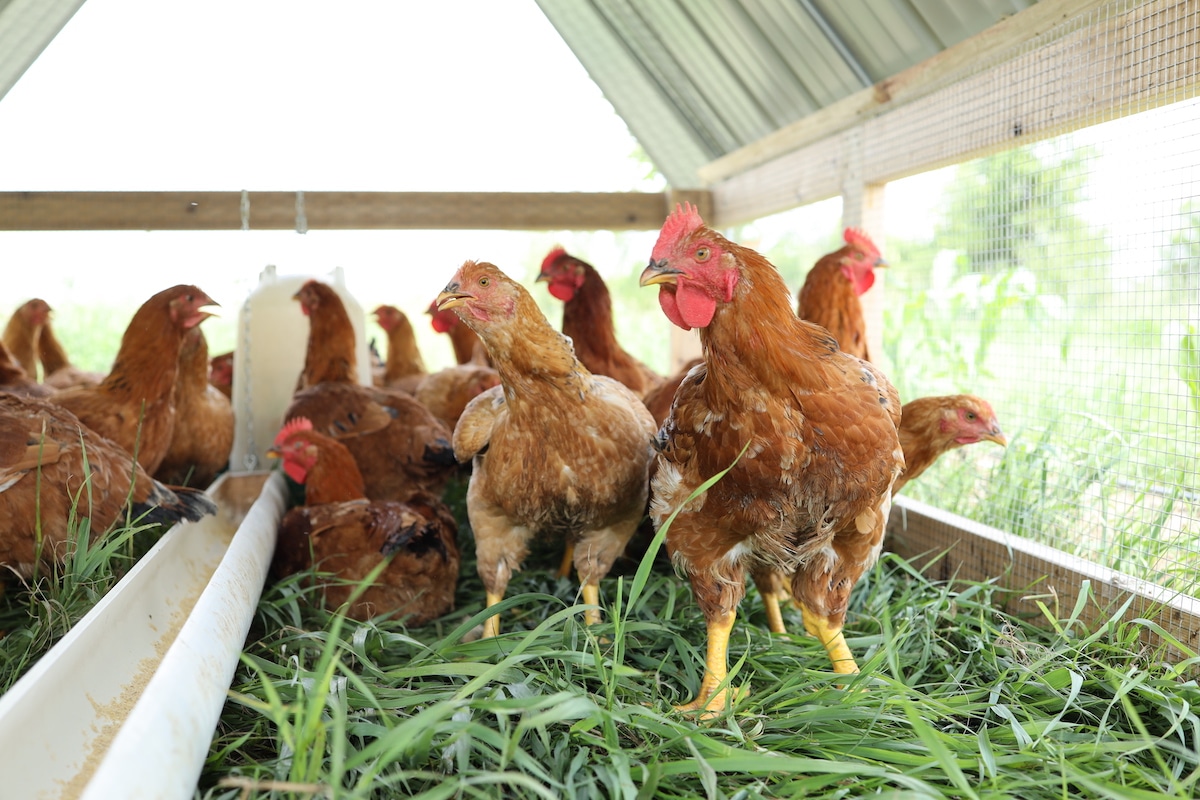
A Disclaimer for the Small-Scale Homesteader
Speaking from experience, don’t just assume anything on this list of ways to generate income is legal without checking first. Your local municipalities and ordinances may allow or disallow certain things.
For instance, we hoped to put a tiny house on our property early on. It could serve as a temporary living arrangement for our family while we fixed up our foreclosed home and then eventually generate income as a farm stay rental. This idea was halted once we found out that our county does not allow tiny homes in any circumstances.
Another rule we found out is that specific sizes of farmland can legally accommodate only specific sizes of on-farm events.
Your local ordinances should spell everything out. And you can sometimes apply for a special use permit even if you don’t meet the current guidelines.
Our encouragement is to look into the rules and regulations first and make sure you’re on the up-and-up before just pulling the trigger on any business venture.
Fire, Aim, Ready!
So what are you thinking for your small homestead? What will you grow, produce, offer, or sell?
If you’re not sure, don’t force it! Let time reveal your passions, skills, areas of expertise, and niches you are uniquely suited to fill in your community.
But balance that with the Fire, Aim, Ready mindset! Don’t be afraid to start when you see opportunity and let the details fall into place and be refined as you go.
Let us know where you’re at below and we wish you the best in your homesteading adventure!
Related Posts:
Why a 5 Acre Homestead is the Perfect Size for a Beginner
Beginners Guide to Self Sufficient Homesteading
Urban Homesteading | 25 Ways To Begin Today
Homesteading Resources | Where To Begin In Your Homesteading Journey
Farm vs. Homestead vs. Farmstead | What They Are and How To Choose
Buying a Homestead on a Budget
Setting Up A Homestead Budget For One Small Income
25 Homesteading Quotes To Empower And Inspire
Pin it for later!
